This is our first trip to Asia, so much is new to us. But a lot isn’t, because – despite what you might suppose or see on TV – people are very similar, all over. Here is a look at some of the similarities and differences. Comparisons of child-raising, sanitation, cooperation and public welfare, off-the-books activities, and driving <link coming> are detailed elsewhere. (Note: If you’re reading on your phone, turn it sideways.)
Clothing
| Same |
Different |
- Most of the time, locals wear the same clothes you would see in any Western country: t-shirts and jeans or khakis.
- Long sleeves are worn above a certain temperature (to protect from the harsh sun), and below (because it feels cold). The in-between t-shirt range seems to be 78-85 degrees.
- Locals wear flip-flops all the time, even while driving motos or bikes. Trying to buy closed-toe shoes was difficult: everything being sold was a sandal.
- Kids here wear school uniforms, like many US kids do. The common uniform is a white/light blue dress shirt and long black/navy skirt for girls or black pants for boys.

|
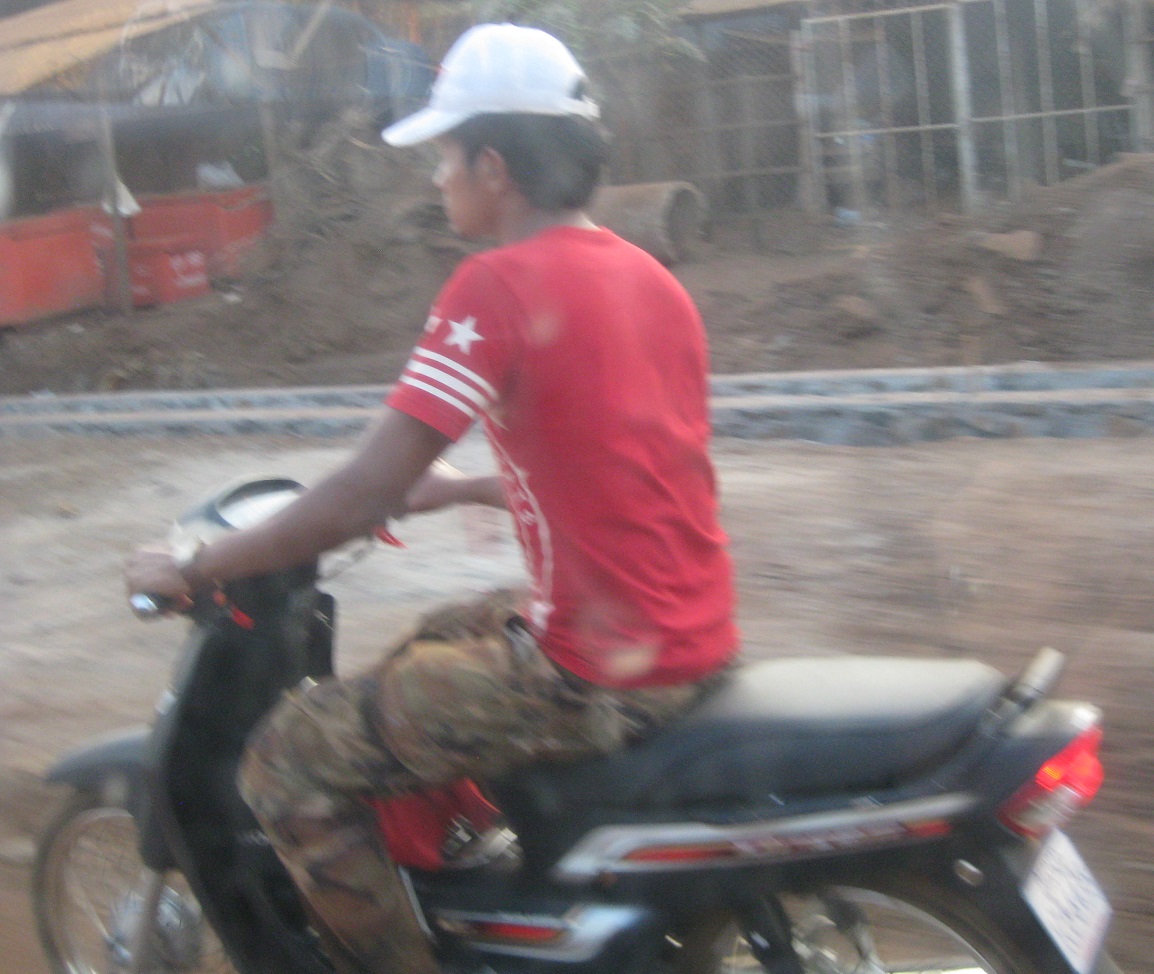
- Women sometimes wear full pajamas outside. They wear them the way we might wear anything else to go out: with no self-consciousness whatsoever. It’s slightly more common among middle-aged women.
- People wear full-coverage hats with neck covering, especially if their jobs entail being in the sun all day. This is smart, given the strength of the sun.
- They seem to really like hot pink clothing: there seems to be more bright pink adult women’s clothing here.
- People sometimes wear surgical face masks when they ride motos around town. Given the prevalence of dust on the roads, I think this is a precaution against coughing more than anything else.
- The only time they wear very different clothing is for weddings. Then, everyone gets decked out, with women donning traditional Khmer outfits in very bright colors. In fact, at markets and clothing stores, I only ever saw casual clothes or super fancy wedding clothes.
|
Laundry
| Same |
Different |
- You can get same-day laundry service, if you need to/pay extra, but next day or later is standard.
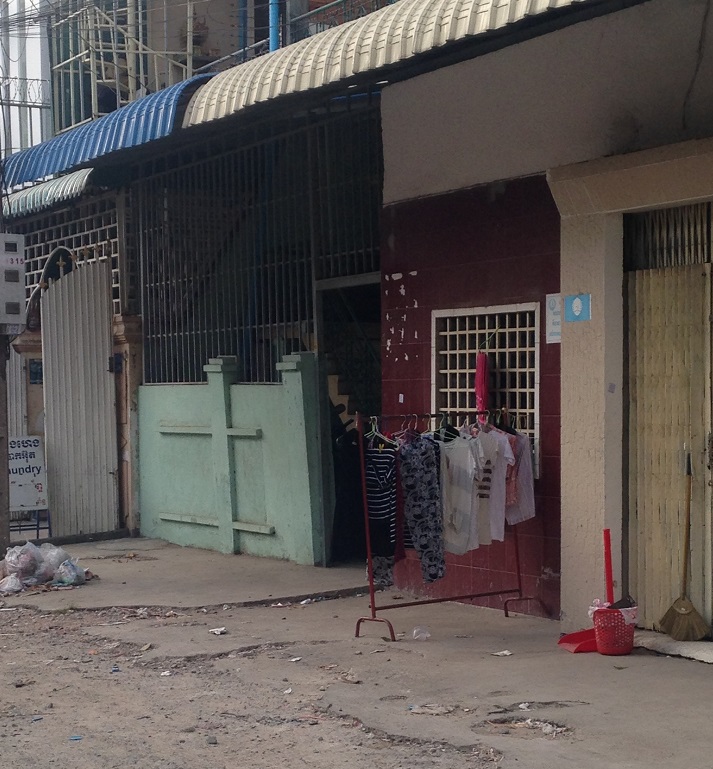
|
- There are almost no laundromats. People take in laundry that they do in their own homes for you. It usually only costs $1 per kilogram!
- When the families are done, they hang the clothes outside, on a clothing rack like the ones US boutiques use when they’re having a special sale: ‘everything on this rack $10 only!’ They use them because there aren’t clothing dryers. It’s funny because, to me, it looks like the whole city is having a clearance sale.
- When you give your clothes to be washed, they often mark the inside with a code (e.g. K1) to ensure they get all the right clothes back to you. It reminded me a bit of labeling clothes before summer camp, except that no one asks you before they do it.
- Because they hand wash things, I don’t think they use fabric softener.
|
Personal Hygiene
| Same |
Different |
- Women go to hair salons often. We saw a ton of them getting their hair shampooed and styled, especially on the weekend.
|
- Beauty products for the skin all include whitening elements. It’s because being pale is valued here, like being tan is valued in the US. B made a good point: in the US, a tan represents outdoor leisure time, because most people work indoors; in Cambodia, most work outdoors, so being pale represents indoor leisure time.
- People are small. They are short, for certain, but they are also very thin. Though we never experienced any problems, others describe weight bullying here.
- A lot of men here have birth marks and many of them have hair coming out of them. None of them cut those hairs, and they can grow quite long!
- Instead of toilet paper, many places have and many people use a sprayer that expats lovingly call a ‘bum gun.’
- When hair is shampooed at a salon, they use a LOT more shampoo than in the US or in Europe. They go until they have a lot of lather to move from hand to hand (like in a bubble bath) and then they add more.
|
Restaurants
| Same |
Different |
- Just like many US places serve either Pepsi or Coke, a lot of places here serve either Angkor or Cambodia beer. The chosen company seems to help pay for the restaurant’s sign, with the beer’s giant logo on it. It reminds me a bit of the old Bud/Miller rivalry in the US, but to a greater extent.
- The process of being served is the same: you seat yourself, and a server gives you a printed menu. You order, and they bring you drinks and then your food – in dishes with similar patterns to what you might see at home.

- Tables usually have a napkin holder and a sauce (like soy sauce) on them, just like US restaurant tables often have a bottle of ketchup on them.
- Most of them don’t have TVs inside, just like at home. A few places have one that men gather around to watch boxing, like a US sports bar.
- Many restaurants have elements similar to US diners (from a decade ago): there is a cash register, paper or carbon copy order slips, etc.
|
- As in Italy, there is the expectation that you will order almost immediately on arrival. Here, it’s not because you read a menu outside (as these are rare, except in super touristy areas), but because people generally know what dishes are available. At many places, the server will stand and wait patiently for you to decide, which can be stressful to Americans.
- As in Europe, they pretty much leave you alone after bringing your food. That way, you can take your time and not be rushed. You just go up front when you want to pay.
- There isn’t much concern over the prevalence of ants or flies in restaurants: both diners and staff long ago learned to ignore them.
- Aside from the difference in sanitation standards, the other reason for this is that most restaurants are at least half open to the outside. There will be a portion that’s under a roof, with not-completely-solid walls, and a portion of chairs completely outside, with no partition in between. This is fairly universal, and it works because of the consistently excellent weather.
- All restaurants have multiple fans inside, usually aimed at a table or two each. This is for the hot season, when going without is painful. (There is no air conditioning though.)
- Usually, restaurants offer forks, spoons, knives, and chop sticks, so you can use whatever is needed most.
- Hot tea is sometimes free! (Though some people are confused about why you would want any hot beverage.)
- Tipping isn’t usually customary, though rounding up is nice, especially if you’re a tourist.
|
Food
| Same |
Different |
- Soups are popular, as in the US – despite the heat here.
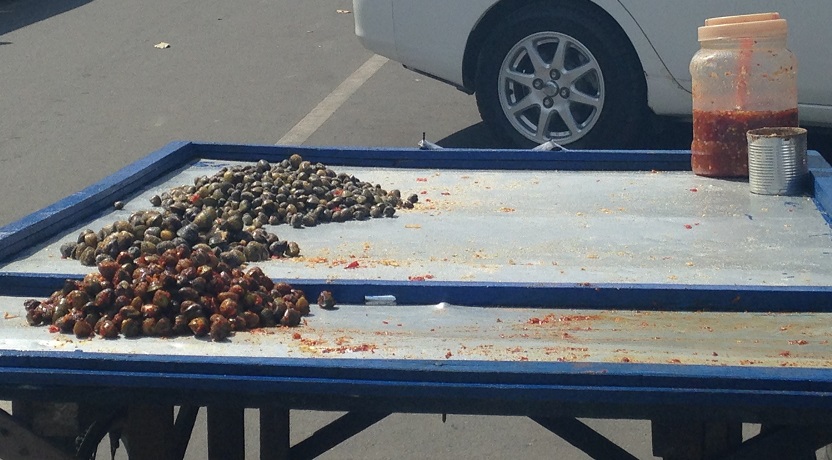
|
- Baked goods are generally drier than in the US. Moisture doesn’t seem to be an expected element of a sweet treat, and things like icing are used less frequently.
- Desserts other than fruit are pretty much just for tourists.
- They do a lot of grill-your-own-BBQ, like in Korea.
- Shakes are very popular here, and they’re made of milk, fruit, and ice. The word ‘smoothie’ is rarely used. And juices are often blended fruit and ice, just without the milk of a shake.
- Snails and other shell foods are very popular here.
|
Convenience Stores
| Same |
Different |
- The snacks sold here are in colorful, single-serving chips-like containers, just like you would see in the US. They hang off the ceiling in plastic packages, so they aren’t as easy to see, when displayed this way.
|
- Unlike US convenience stores, local ones are not so much stores as they are roadside stands. They sell snacks and produce, along with things like gasoline.
- There aren’t big box stores (like Target), or even large supermarkets: they just don’t exist. People go to convenience stores and large outdoor markets to get anything they need.
|
Food Stands
| Same |
Different |
- Some vendors ride around town ringing a bell to get people’s attention, just like an ice cream truck would.
- Others stay in one place, like American food trucks, and focus on making one specific food well.
|
- They pour drinks into plastic cups and then put the cups in plastic ‘slings,’ to make them easier to carry.
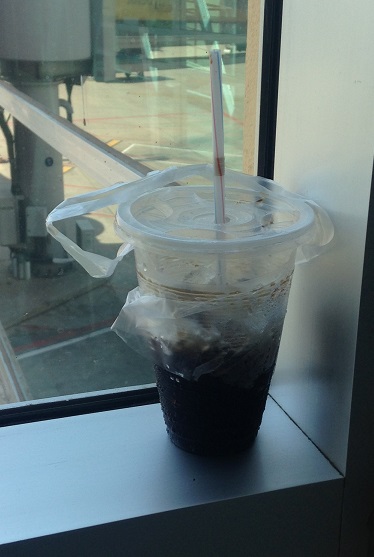
|
Neighborhoods and Housing
| Same |
Different |
- As in more rural parts of the US, there is a high level of cooperation among neighbors. They seem to help each other build or fix things and neighborhood kids all play together. Though we saw fences between houses in the countryside, they were so low that they seemed aimed at keeping cows from jumping into a house’s front yard, not at keeping people out.
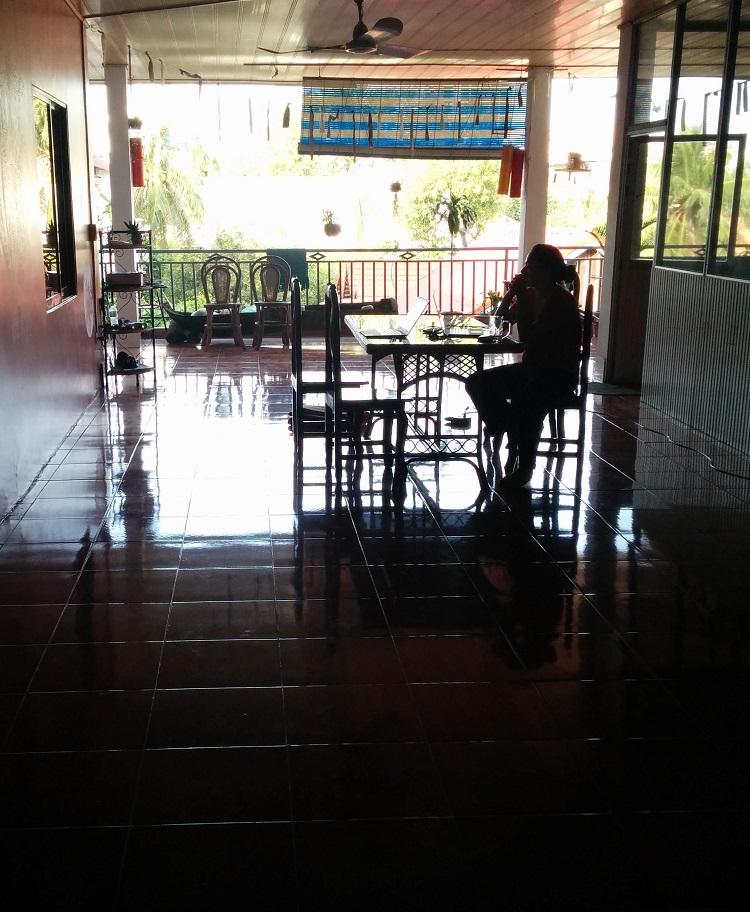
|
- Houses outside the city are often built on the sides of the bigger roads. There aren’t neighborhoods self-divided into socio-economic classes. For example, a small shack could be next door to a large, fancy, multi-level house. I’m not sure if this is a reflection of family economic circumstances changing over generations, but these folks still live next to each other.
- They live their lives in public. Things that Americans would do inside their homes or in their backyards happen in the open here. Naked babies are bathed on the sidewalk in front of a store. Motorbikes sometimes drive up and directly into a living room or store. Cafes and stores often have screens for walls or completely open sides. I suspect that this is both because of the limited space, as well as the cultural norm of interacting publicly. Our host said that when some folks were relocated to high-rise apartments, they were completely confused: what were they to do if their store wasn’t right below their living quarters? How would they see their friends? Privacy means something very different here.
- People often sleep in hammocks outside: that is their primary bed!
- Houses, like restaurants, are often partially open to the outside.
- Weddings, funerals, and other community gatherings go through the night and are usually incredibly loud. People complaining about the sound is not a thing. Ever.
- Very few places have hot showers.
|
Gasoline
| Same |
Different |
- Gas prices were fairly comparable to those in the Midwest: it was about $1 for 1 liter, which would make it $3.79 per gallon.
|
- Gasoline is sold at gas station pumps, but more common are roadside stands (the same ones selling snacks). They have gasoline in old glass Coke litre bottles that they dispense with funnels. I had no clue that gasoline was so light in color and so liquidy.
|
Recreation
| Same |
Different |
- Volleyball courts and various paddle games (e.g. badminton) are common here. Kids play soccer in parks, and we saw roller skaters on more than one occasion.
|
- Though it may have been a form of recreation and religious practice long ago, Apsara dancing is mostly a tourist entertainment now.
|
Emotions
| Same |
Different |
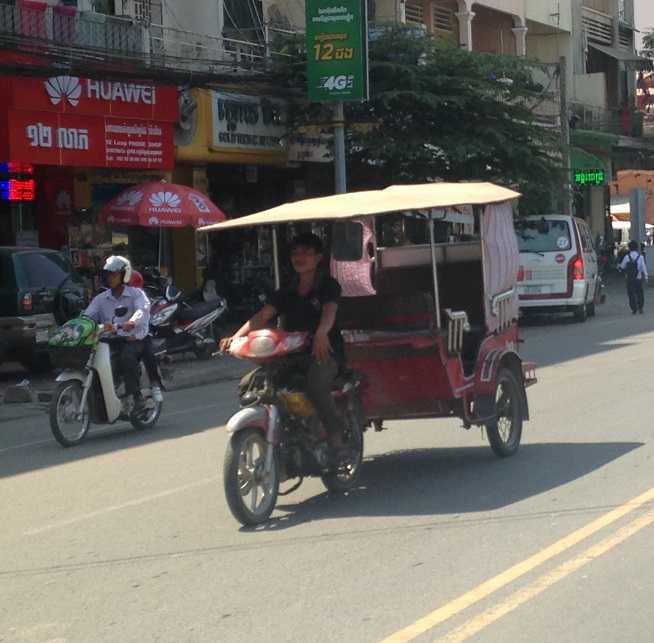 |
- Locals are pretty phlegmatic. They don’t get road rage, and they don’t get visibly upset in public.
- They take rejection in stride: you say you don’t want a tuk tuk ride, and they still smile at you.
- PDA is pretty much off-limits. There is no hand-holding even, and it doesn’t matter if you’re married or not. Along the Phnom Penh riverfront at night, we saw a few couples sitting very close, but that was the closest it got.
- Things happen slowly, and there isn’t much of a rush. People work all day, so they might need to go slower so as not to burn out. People don’t mind waiting: a tuk tuk driver will wait for hours for a fare, often just laying in his tuk tuk, without a phone or anyone else. Patience is still a thing here.
- People are very nice.
|
Roads
| Same |
Different |
- Like US highway markers, there are road markers here, though not quite with the same regularity. They look like tombstones.
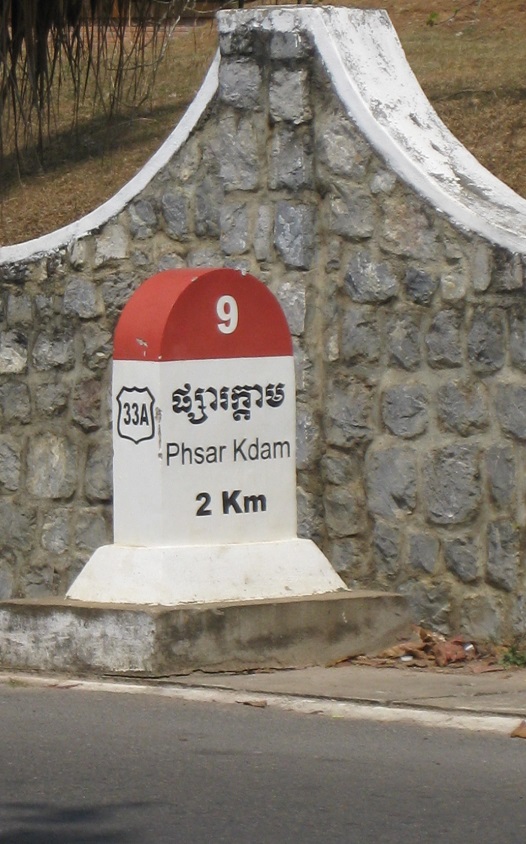
|
- Many roads are red dirt roads, packed down by frequent use.
- There are a lot of roundabouts, and almost no stop signs or red lights.
|
Safety
| Same |
Different |
- They have helmets, and some people even wear them.
|
- The philosophy is pretty much, ‘Look out for yourself.’ We saw exactly one sign suggesting we be careful, and it was in a super touristy temple. Otherwise, it is assumed that you will take the appropriate precautions.
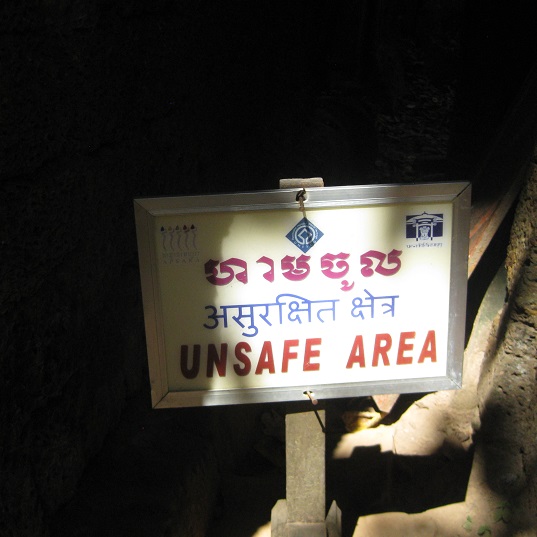
|
Forms of Address
| Same |
Different |
|
- Locals address tourists by referring to men as ‘sir’ and to women as ‘lady’ (in English), regardless of age, status, etc. This was a bit jarring at first, since I expected to hear Miss or Mrs., but I grew used to it.
- Perhaps this is because I was a tourist, but I only ever heard people give their first names; no last names.
|
Pets
| Same |
Different |
- Many people in the countryside have dogs, as a form of protection. The dogs are completely docile during the day, but they are angry barking machines at night. Most are mutts.

|
- There are a few cats, but they seem to be used primarily to eat the rats and mice, and are outdoor, not indoor, cats.
- A few people have birds in cages. It seems like the canary in a coal mine idea, but I’m not sure.
- There are cows all over, and even some water buffalo. (Many of the cows are so skinny that you can see their ribs. The water buffalo are so large as to be frightening.) Though they will sometimes cross the street in front of traffic, they are not just wandering beasts: they belong to specific families, whose members are the ones to take them out and herd them back. We also saw some goats and pigs, though these are much less common.
- Chickens and roosters are everywhere, walking along the sides of roads, and moving quite quickly when they hear traffic. They tend to have longer legs than ones in the US (for all that running) and are scragglier-looking overall.
- Rats are not pets, but they are huge!
- There are monkeys around too. They don’t seem to interact with people too much.
|
Sexism
| Same |
Different |
- Despite the tuk tuk thing (at right), most women work: more even than in the US.
|
- It’s a bit similar to Italy. Tuk tuk drivers always ask the man if he wants a ride first, because they assume he has the money. (A Canadian girl of Cambodian parents told us this: they ask her Canadian boyfriend instead of her, though she speaks the language.)
- Men are significantly more likely to care for children during the day than in Western cultures.
- Men tend to work as tuk tuk/moto drivers, to repair equipment, to serve as government officials, and to help tourists with bookings. Women tend to be the ones to sell goods like produce or clothes at markets, to work in textile factories, or to pick crops in the field. Both genders work at restaurants/cafés or hotels, serving customers.
|
Government
| Same |
Different |
- There are signs all through the countryside that read, ‘Cambodia People’s Party,’ with photos of a few officials/political figures on them. I never saw anyone pay them any mind, but they are everywhere. It reminds me of political commercials on US TV: no one thinks they’re particularly true, but they do appear in overwhelming number.
|
- All governmental buildings and local businesses – whether a massage place or a motorcycle repair shop, have a big ‘photo’ of the current king on it. It’s always the same highly-Photoshopped picture of him wearing his regalia, and it is usually adjacent to photos of his mother and (late) father.
- People don’t expect the government to step in. The default assumption is that people will figure it out together without involving authority.
|
Religious Icons
| Same |
Different |
- Many temples have inscriptions on each piece of art or architecture, denoting how much it cost and who contributed the funds. This is similar to the ‘Donors’ listings on US charity buildings, websites, or programs.

|
- There is a gate in front of every Buddhist temple (wat): it is ornate and features themes that hint at what is past the gate.
- Often, Christian homes have a painting or sculpture of Jesus on the wall, but many businesses in the US don’t – except in parts of the South. Here, most businesses have a small altar in the back, where employees light an incense stick and say a little prayer. I think this is partially because many Cambodians work at their place of employment all day, not 9 to 5, so they need a place to practice their beliefs.
- Outside most businesses is something that looks a bit like a doll house on a pedestal. It’s similar to the indoor altars, but we never saw anyone pray at one. They tend to be gilded, and they call them cloud houses or something similar. There are many stores that sell them for placement next to a business.
- Lotus flowers are sometimes used as offerings next to altars.
- There is a lot of gold/gilding in religious icons and buildings.
|
Money
| Same |
Different |
- Most people are incredibly honest, especially about money. A man was trying to sell B something, and B declined, but the man still pointed out that B had dropped money. Some tuk tuk drivers even corrected B’s proposed fare down.
|
- Many national places of interest are free for locals to visit, whether parks, caves, shrines, or national parks. Foreigners pay.
- The average day laborer’s wage is $5. By comparison, the US poverty line daily wage is $32. (Not quite a fair comparison, I know.) For a local, one cheap meal at a roadside or market stand (not a restaurant) is $0.50-$1, which would be 10-20% of the daily wage. A cheap (e.g. fast food) meal out in the US could be $2-$4, which is 6-13% of the poverty line daily wage. In other words, it costs Cambodians more to eat out.
- Both Khmer riel and US dollars are accepted everywhere, and combining the currencies to give correct change is normal.
- They don’t have coins!
- Most places are cash only. There is very little credit or debit card use anywhere.
- Things are really cheap for us. I mean, you start to feel a little rich, when massages are $5, stitches and anesthesia are $15 <link coming>, and a ‘cab’ ride is $1-$2.
|















Thanks for the tip to read sideways! Whitening creams are all over the place in India. Also, you clearly haven’t been in the US for a while; we’ve been getting gas for just over $2/gallon lately! Crazytown.
$2?!? What, did we try to take over some countries that have a lot of oil, or something?
Pingback: Surprising Things About Singapore - Novelty Buffs
Pingback: Surprising Things About Bangkok - Novelty Buffs
Pingback: Surprising Things About Thailand - Novelty Buffs
Pingback: Surprising Things About Osaka - Novelty Buffs